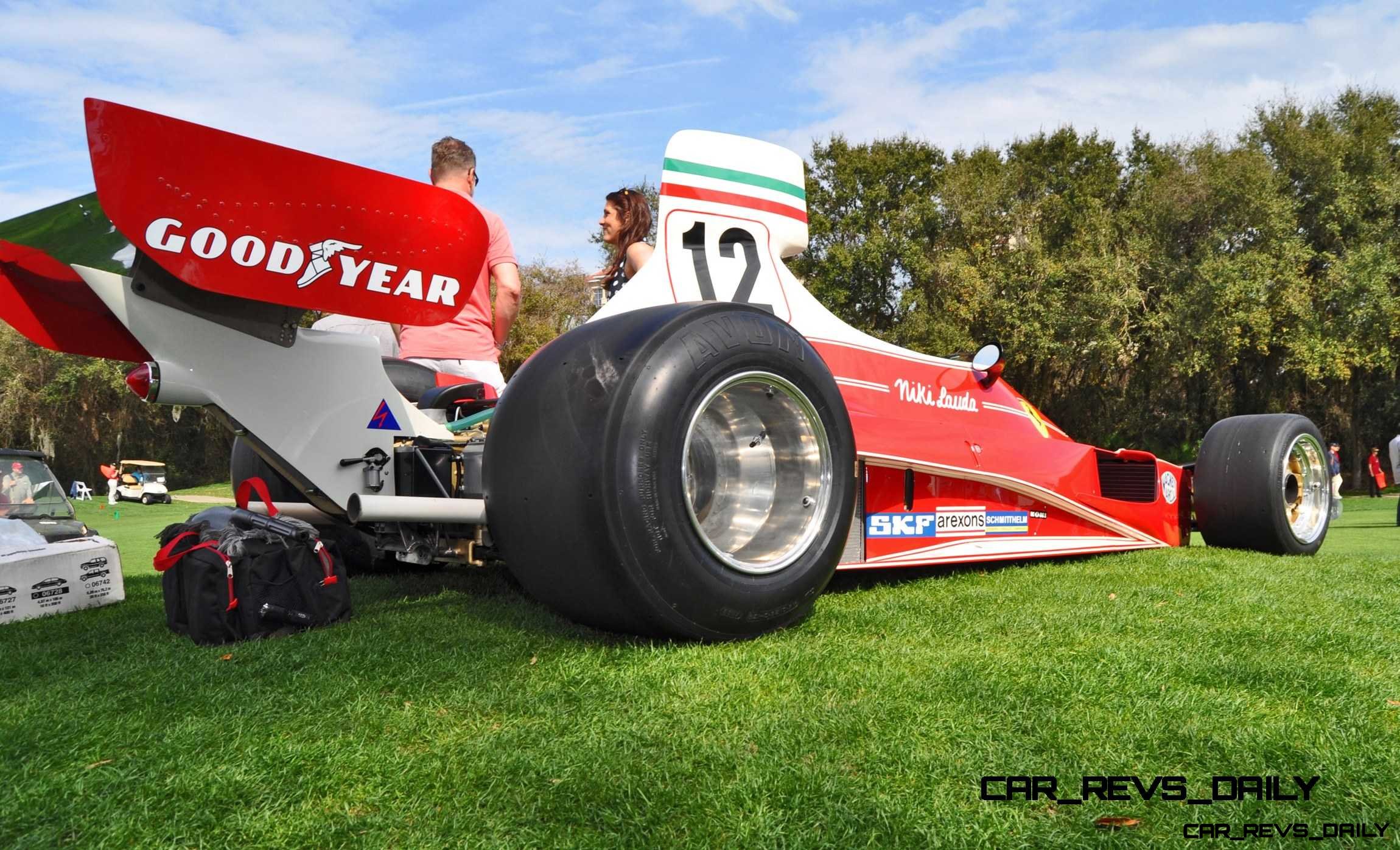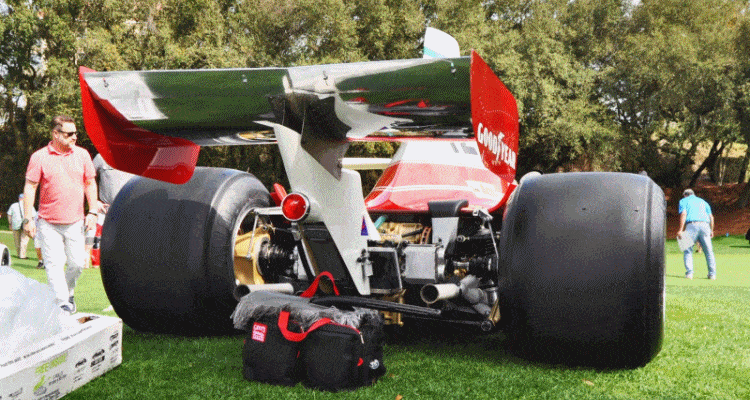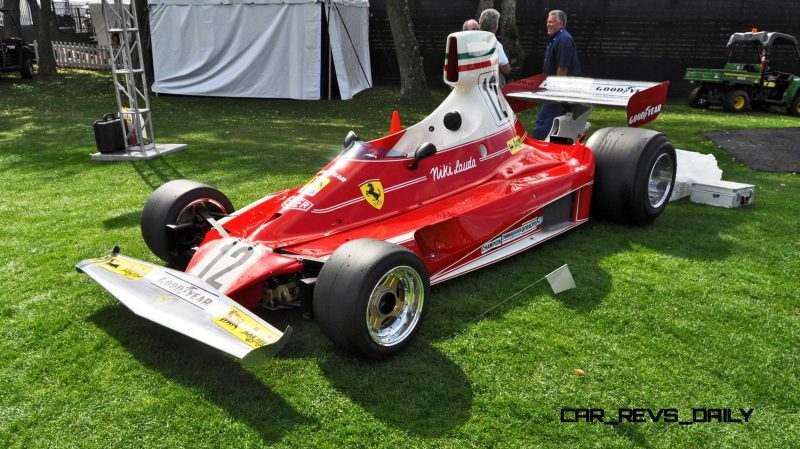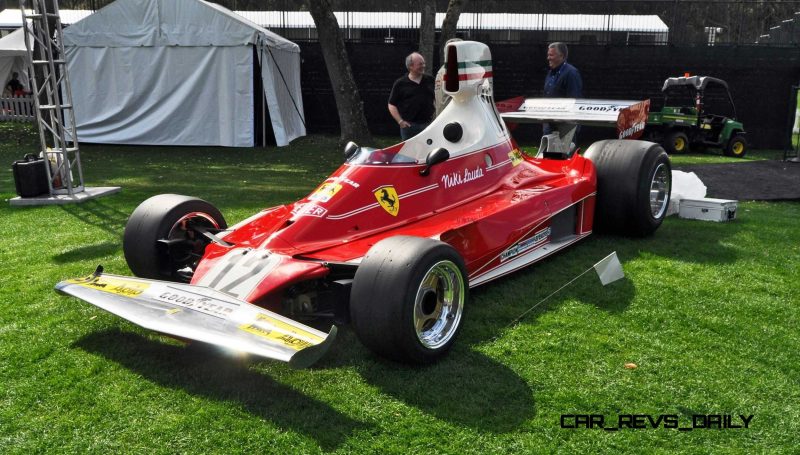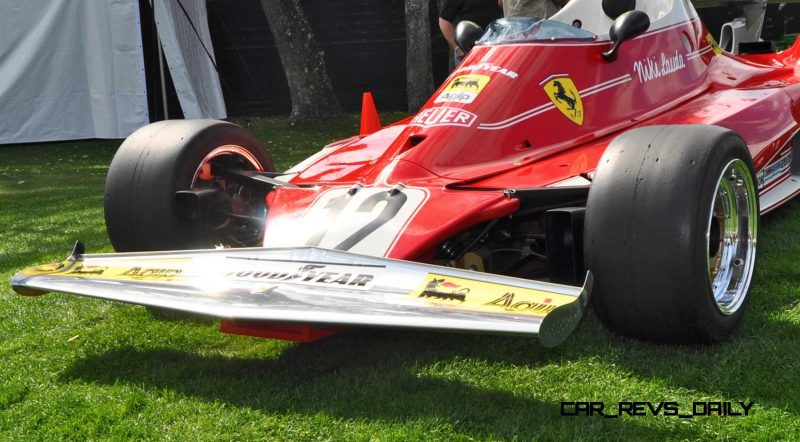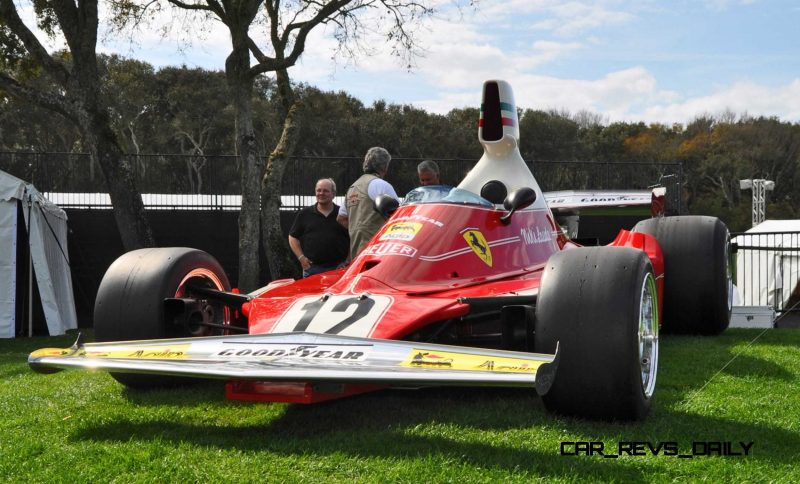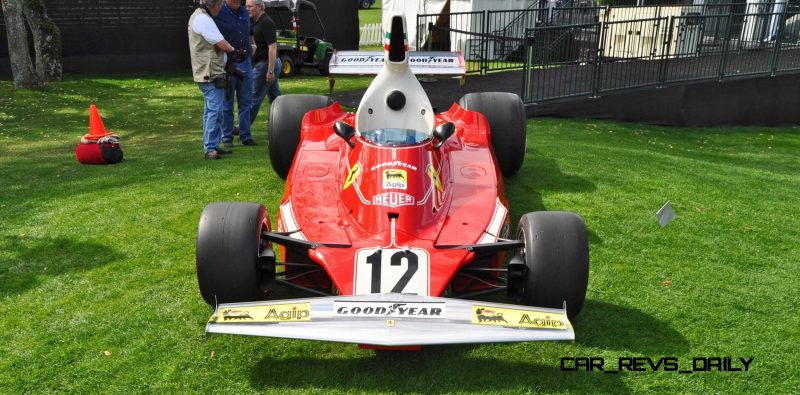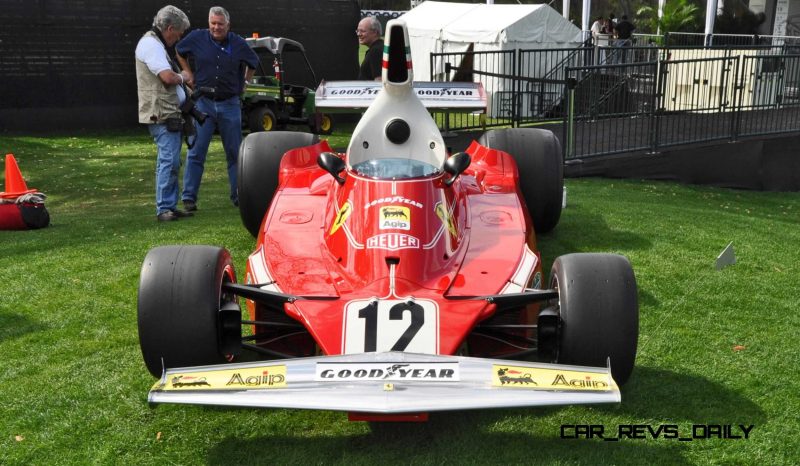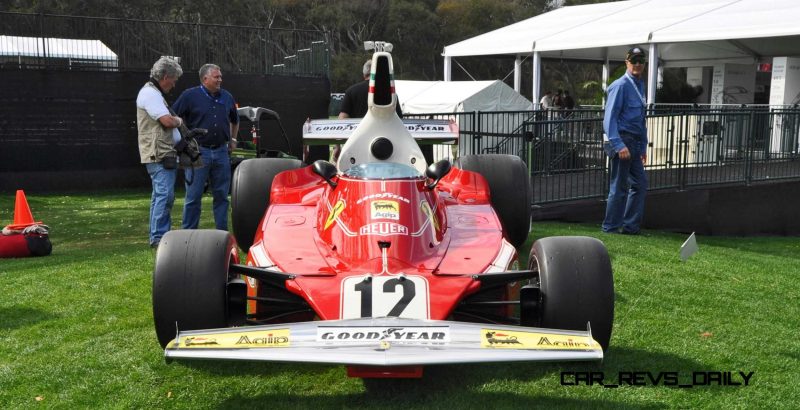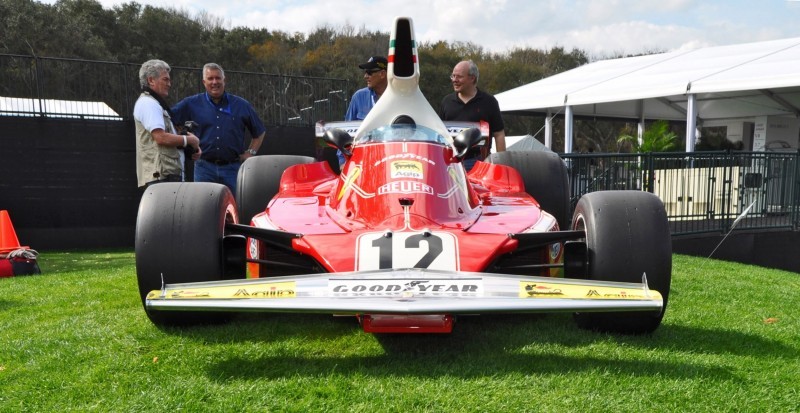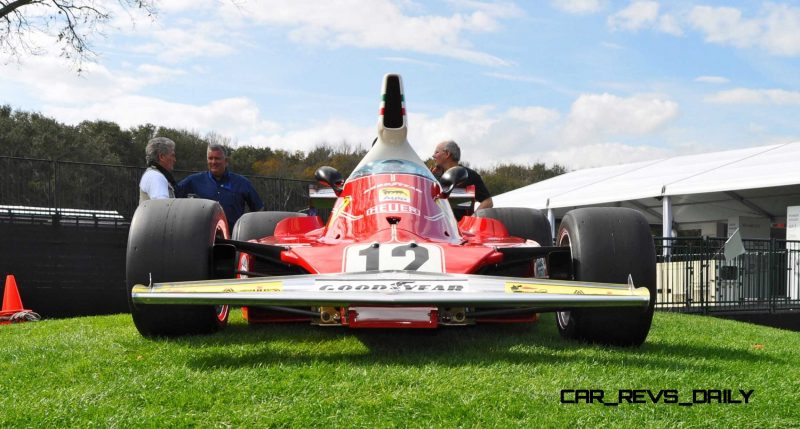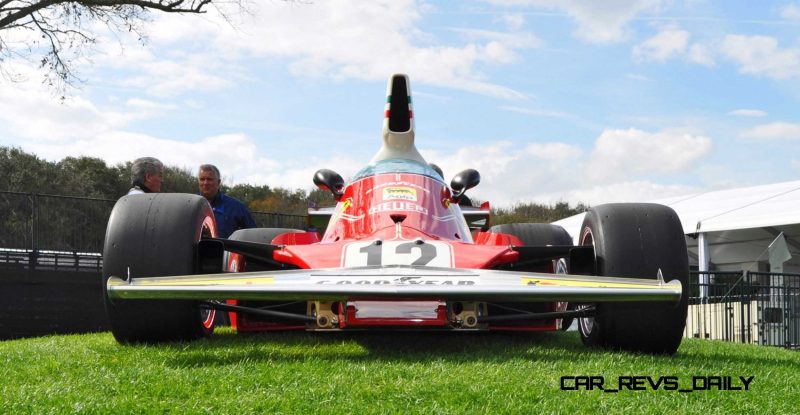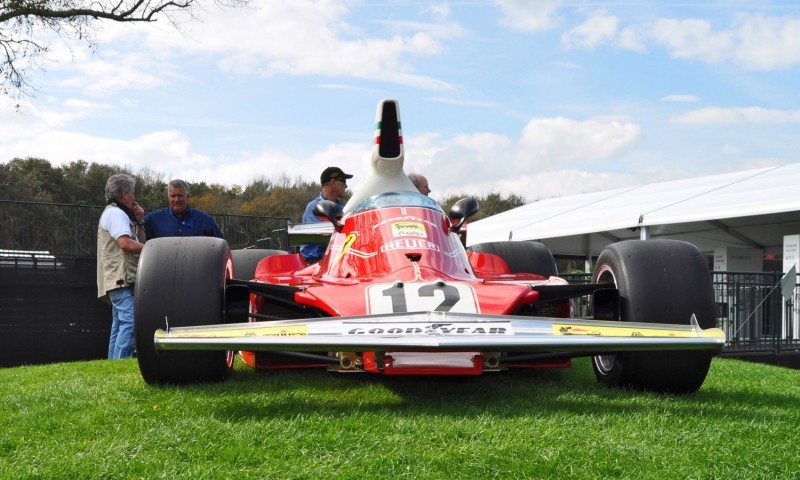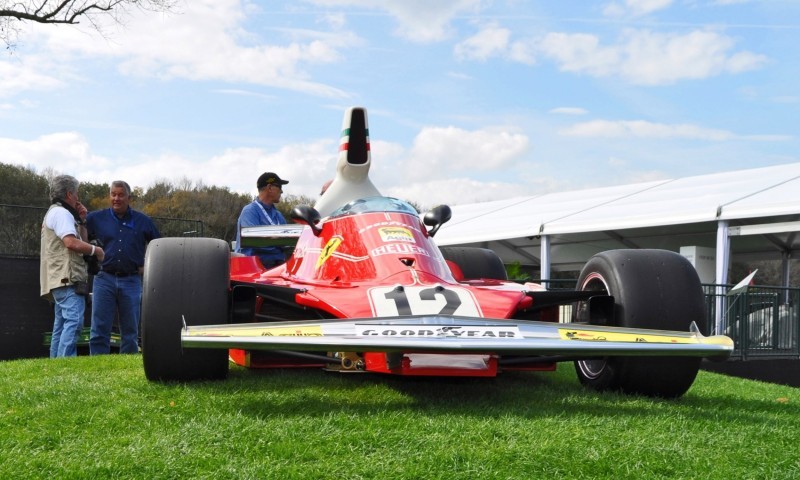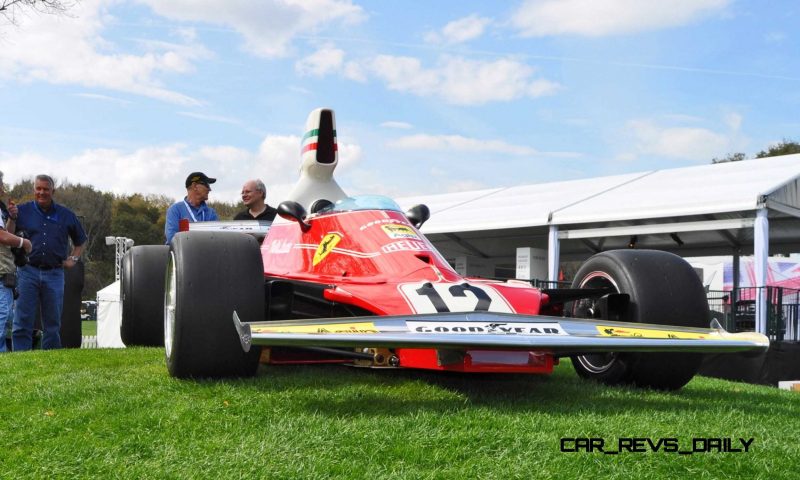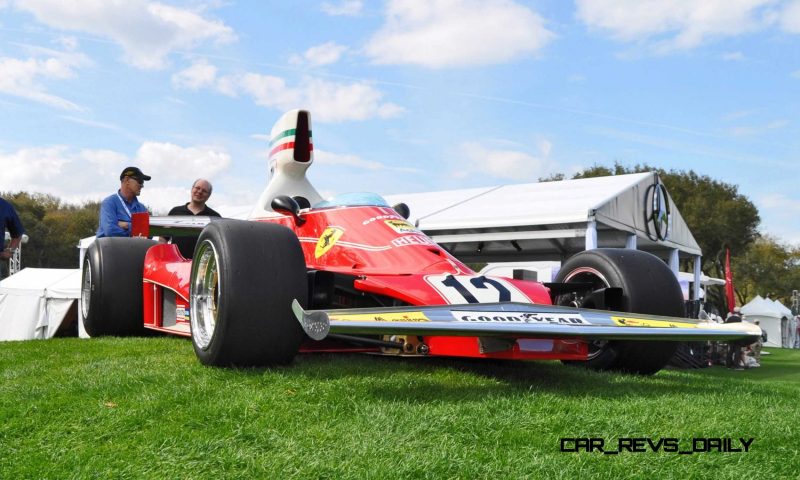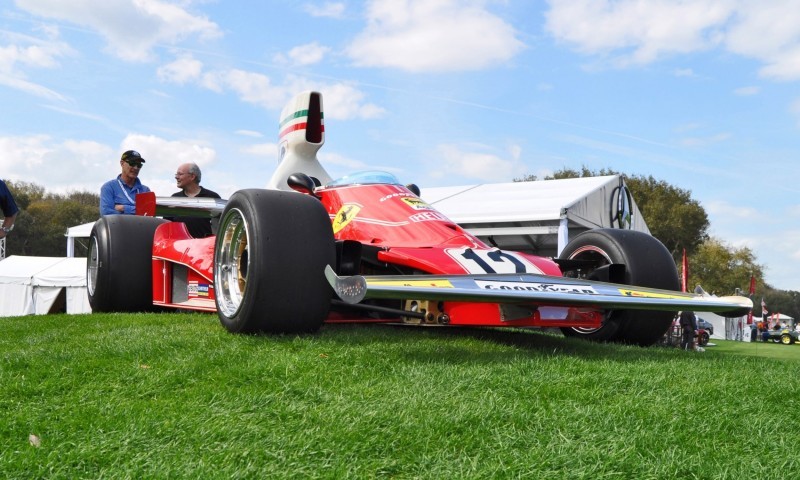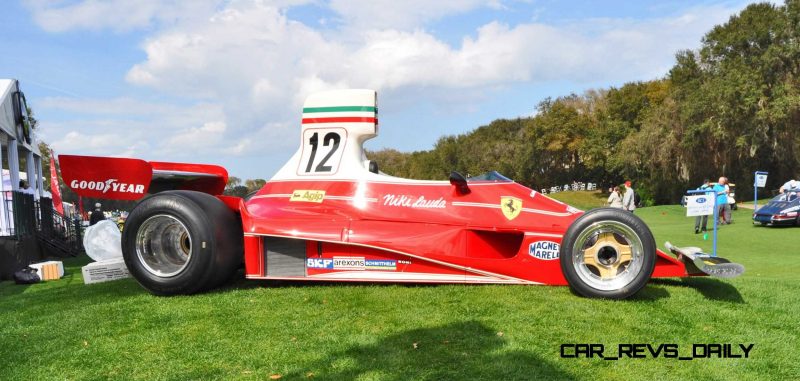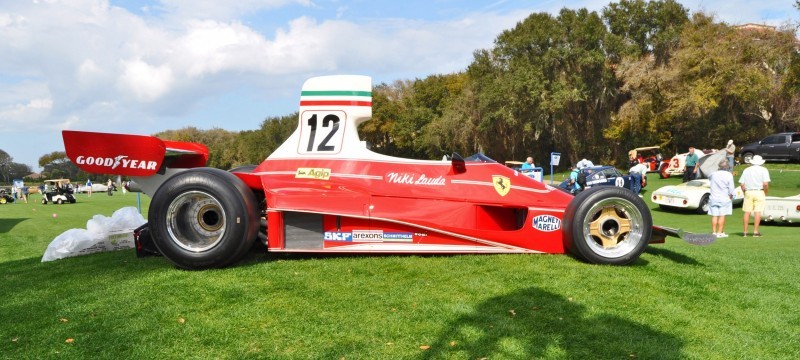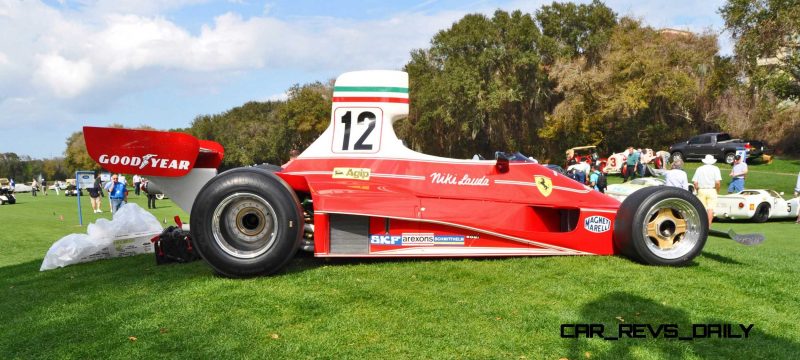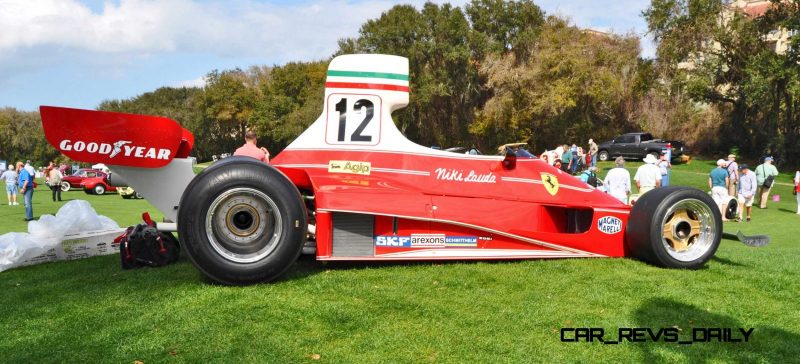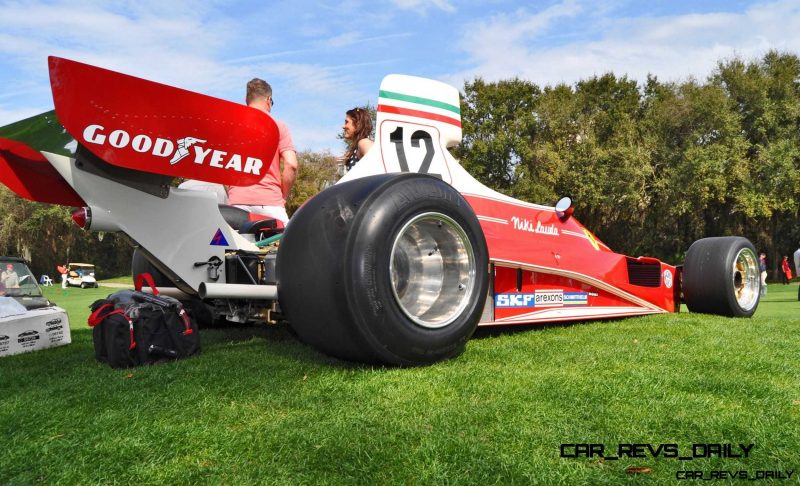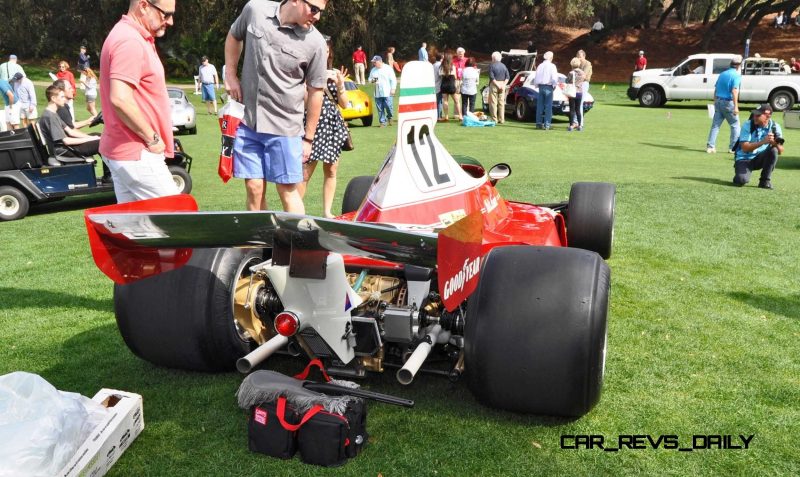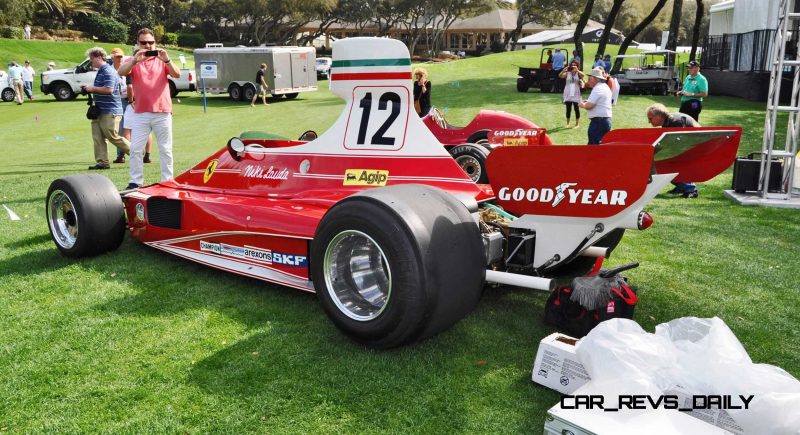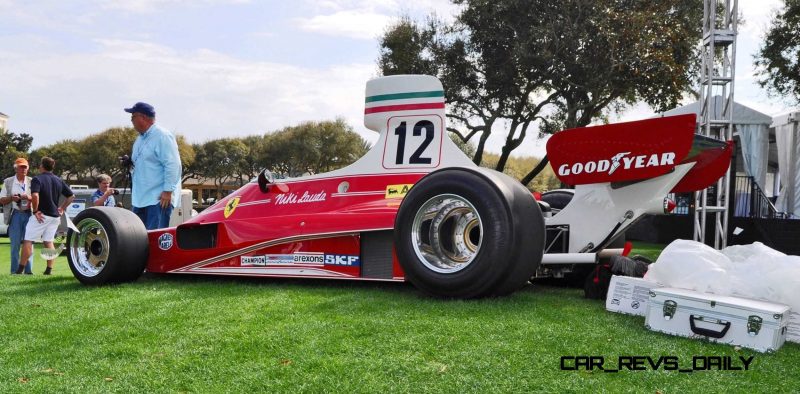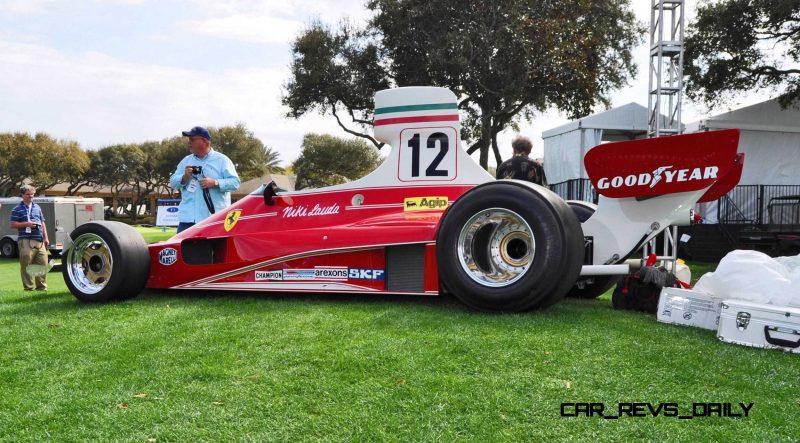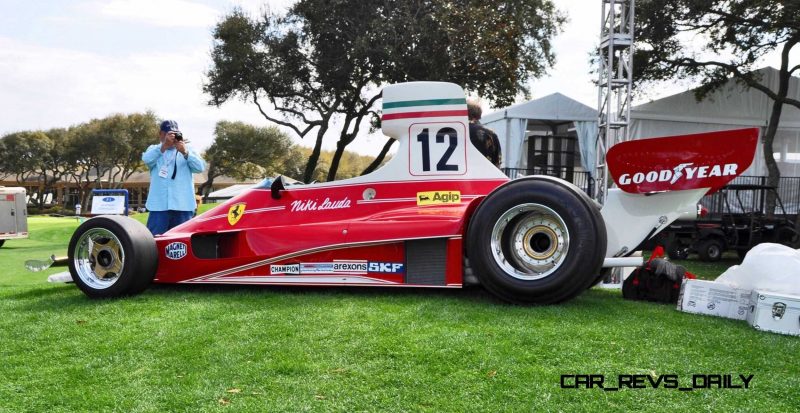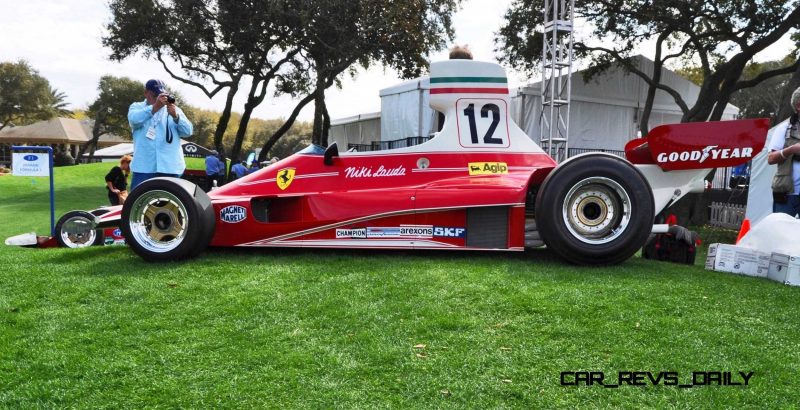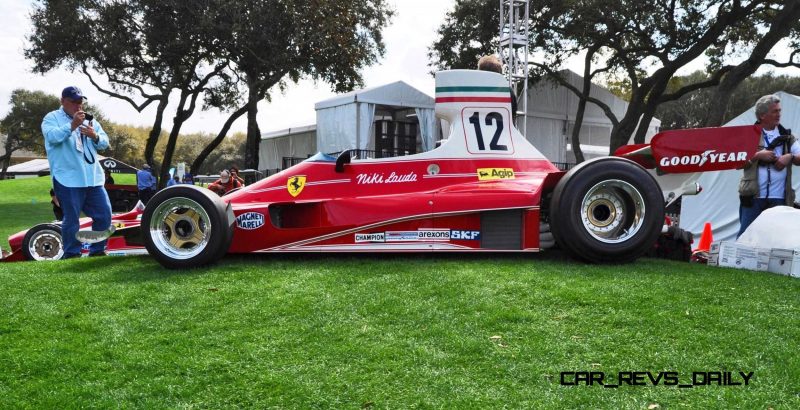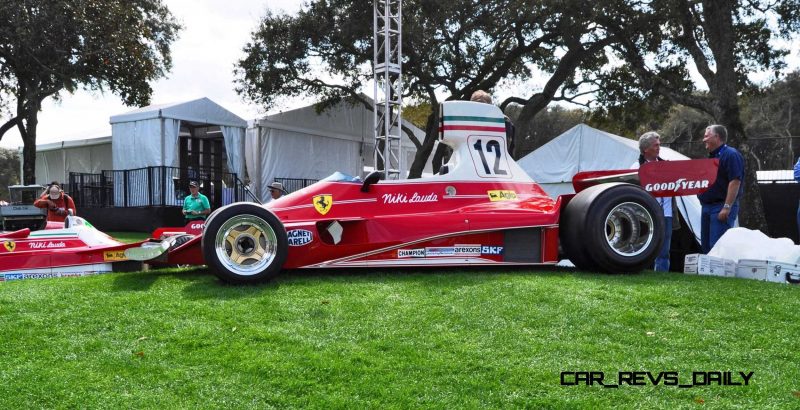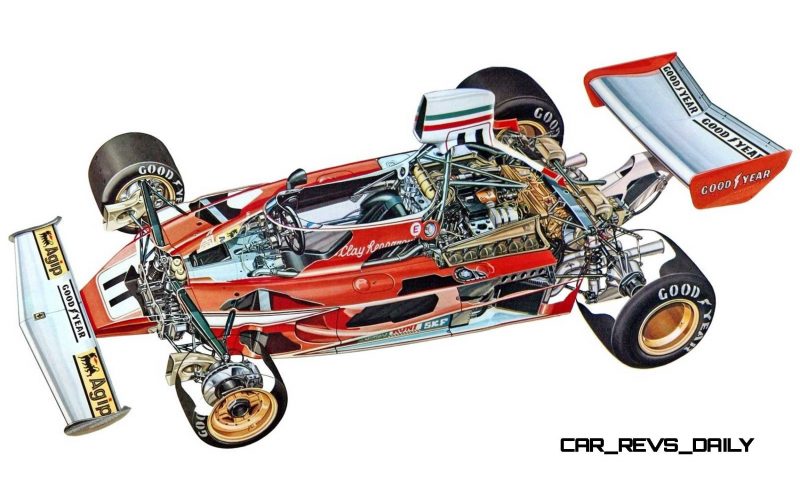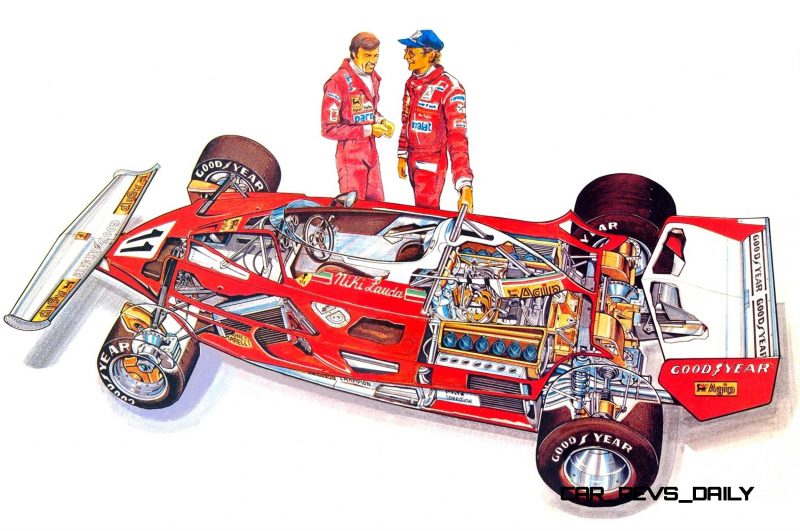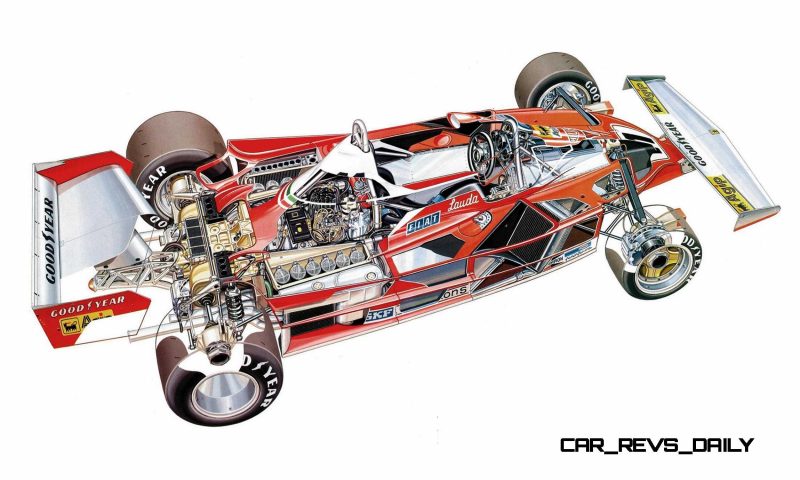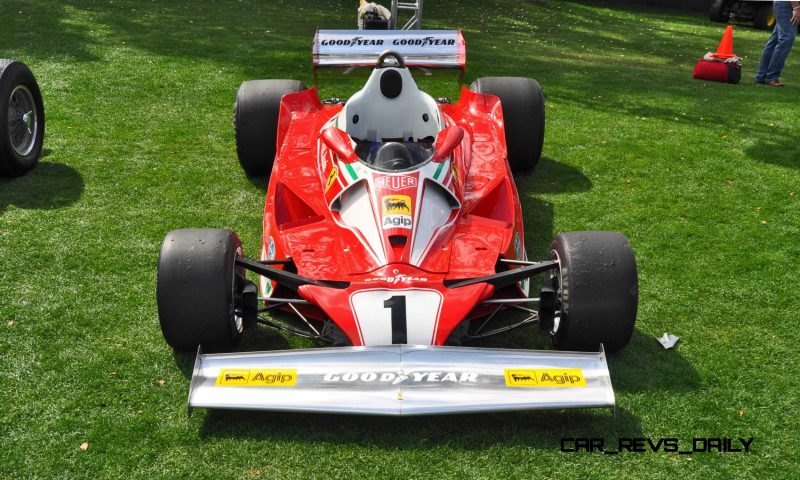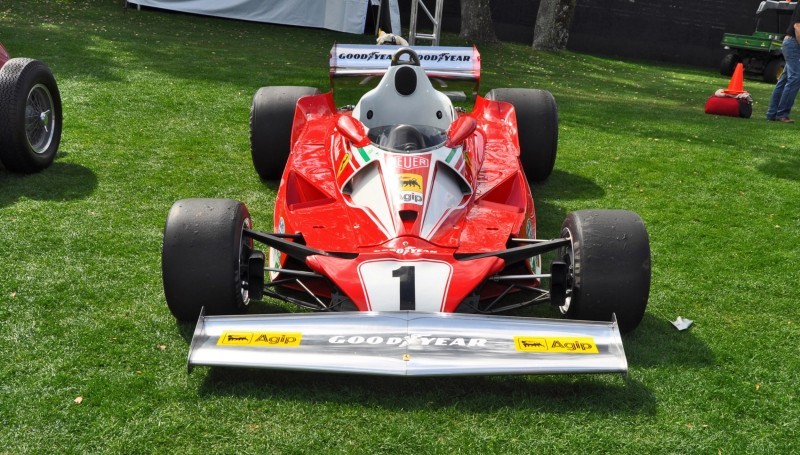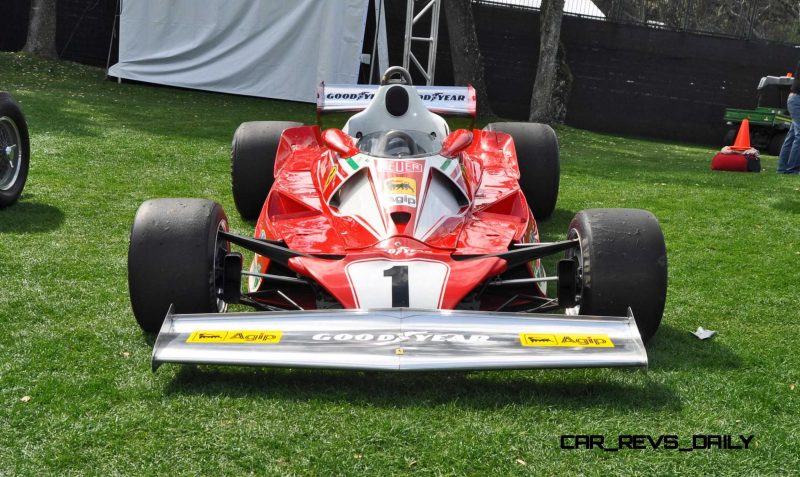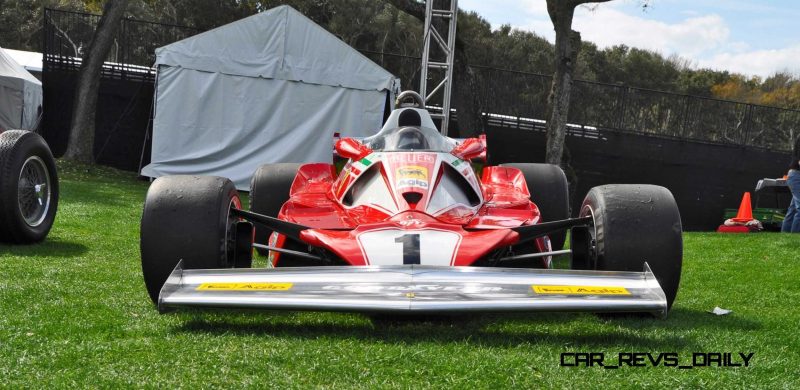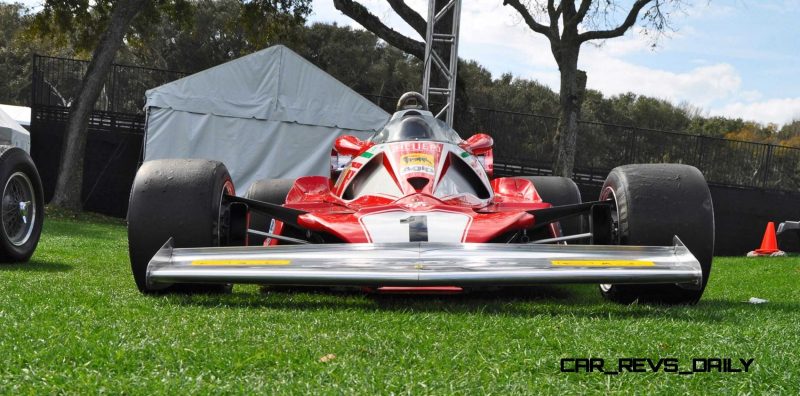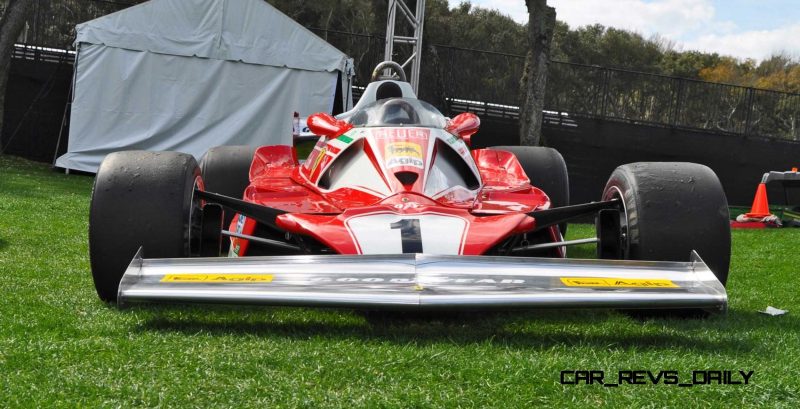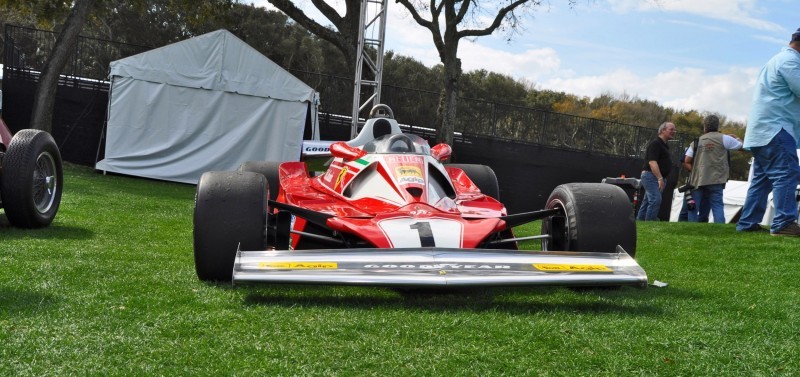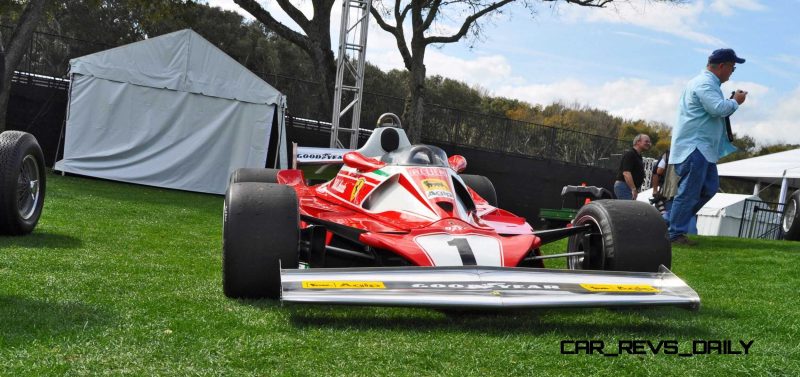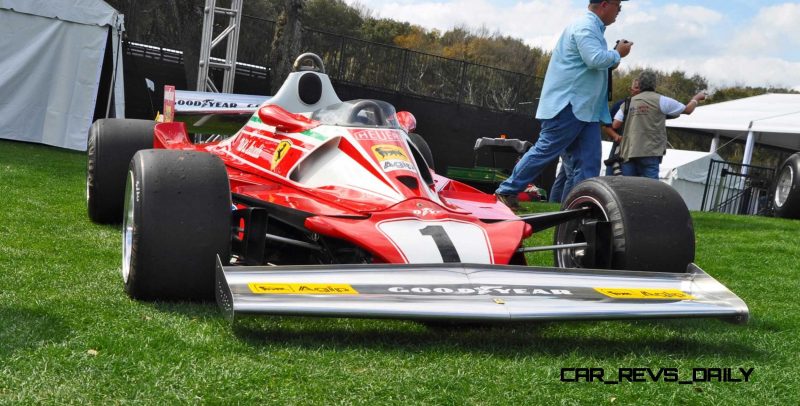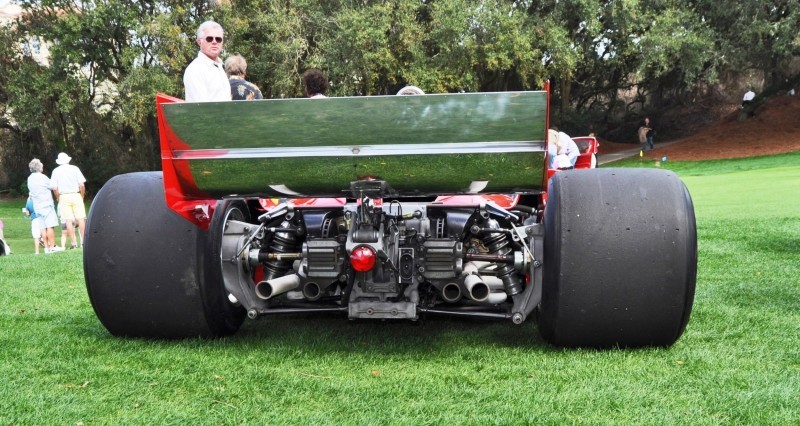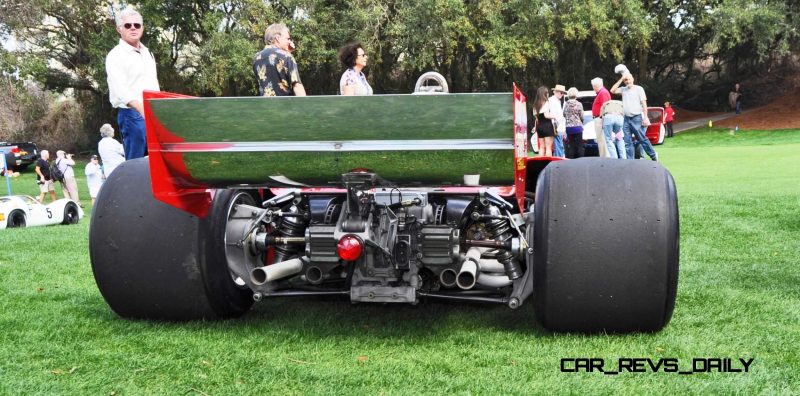These two Ferrari F1 cars were an incredible addition to the Amelia Island Concours for 2015. Hailing from 1975-76 and 1976-77, the 312T and later 312T2 represented a game-changing redesign by Ferrari.
Raced by Nikki Lauda and scoring numerous race wins, the 312T is more outrageous to modern eyes thanks to its gigantic periscope of an air intake. Both machines have the almost eye-poppingly huge staggered tire setups of the era, putting tiny front rubber with a very narrow sidewall up front, but huge drag-racer-like slicks on the back. The ratio of front to rear tires is ostensibly 1 to 1.33X, but in the flesh and without any fenders — the back tires might as well be twice as large.
The design lessened aero drag up front, and maximized traction in the back during this era of super-powerful F1 racers.
This 312T runs a 3.0-liter flat 12, producing 500-horsepower at over 12,000-rpm. A screamer, she is!
The big innovations for Ferrari on this first year the race team was headed by Luca di Montezumolo? A carbon-fiber nosecone was like something out of sci-fi at this time in the 1970s, and there was big action in back too. The 312T innovated a new sideways mounting for the transaxle. This kept much of the gearbox’s weight within the wheel-base of the car. The result was a hyper-maneuverable car that could change direction like a gold-medal slalom skiier.
The later 312T2 is arguably more handsome from the front, as it is lower and more streamlined all around than the tall-intaked 312T2. Both are stunning time-capsules from the glory days of Formula One.
1975 Ferrari 312T
|
|
Active: 1975 – 1976Team: Scuderia Ferrari SpADesigners: Mauro Forghieri (CD), Franco Rocchi (HE)Drivers: Niki Lauda (12), Clay Regazzoni (13) |
1975 Ferrari 312T






























Chassis Specifications
Chassis: Type 015 monocoque body, aluminium panels riveted to rectangular section tubular steel structure with boxed supports
Front Suspension: Double wishbones, rocker arms, inboard spring/dampers units and anti-roll bar
Rear Suspension: Reversed lower wishbones, upper arm, and central radius arm
Brakes: Discs and Lockheed calipers, inboard at rear
Steering: Rack and pinion
Length: 4143 mm
Width: 2030 mm
Height: 1275 mm
Wheelbase: 2518 mm
Front/Rear Track: 1510 mm / 1530 mm
Kerb Weight (with water and oil): 575 kg
Front Tyres: 9.2-20.0-13″, Goodyear
Rear Tyres: 16.2-26.0-13″, Goodyear
Wheels: split rim, front 10×13″, rear 17/18×13″
Fuel Tank: 200 litres, 2 side and 1 central tanks
Bodywork: Single-seater aluminium body and composite elements
Transmission: Rear-wheel drive, Borg & Beck multi-plate clutch, 015 transverse-mounted inboard 5-speed gearbox + reverse, friction plate limited-slip differential
Gear Ratios: Variable depending on track
1975 Ferrari 312T F1 Car
Engine Specifications
Type: Type 015 rear-mounted 180° V12, light alloy cylinder block and head, aluminium wet liners, 112 mm connecting rods, water cooled
Bore & Stroke: 80 x 49.6 mm
Unitary and Total Displacement: 249.317/2,991.801 cc
Compression Ratio: 11.5:1
Max. Power Output: 495 bhp at 12,200 rpm
Timing Gear: 4 valves per cylinder, 2 overhead camshafts per cylinder bank, gear driven off the rear of the engine
Fuel Feed: Lucas indirect injection
Ignition: Single plug, Dinoplex electronic capacitive discharge, coil-ignition
Lubrication System: Dry sump
Tech Specs c/o
http://www.f1technical.net/f1db/cars/335/ferrari-312t
1976 Ferrari 312T2

Tom Burkart is the founder and managing editor of Car-Revs-Daily.com, an innovative and rapidly-expanding automotive news magazine.
He holds a Journalism JBA degree from the University of Wisconsin – Madison. Tom currently resides in Charleston, South Carolina with his two amazing dogs, Drake and Tank.
Mr. Burkart is available for all questions and concerns by email Tom(at)car-revs-daily.com.

